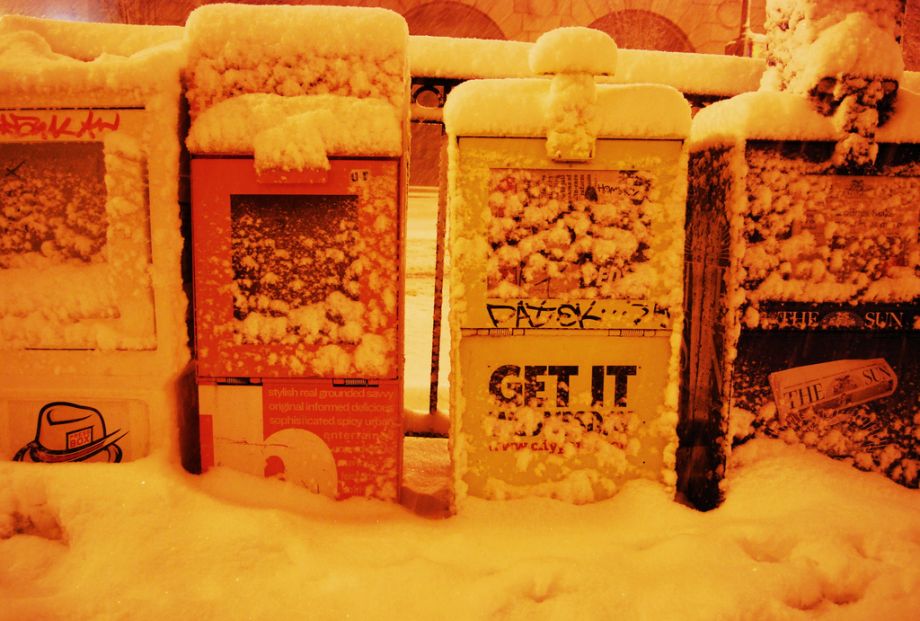Last month, Pew’s Project for Excellence in Journalism (PEJ) released How News Happens, an in-depth assessment of a week in the life of Baltimore’s local news media. As you might suspect, the news isn’t good. Three related conclusions stood out to me:
1. Roughly 80% of the news studied was repackaged material – often without attribution or acknowledgment – that contained no original reporting and often parroted press releases word-for-word
2. Of stories that contained new information, 95% were produced by traditional media (especially the Baltimore Sun)
3. New media is being employed to deliver content, but the web is not a meaningful source of new local information
Without a doubt, Baltimoreans should be worried about their community’s health. As anybody who watched the final season of The Wire knows, the Sun is a shell of its former Pulitzer-prize winning self. Despite this, the city is still dependent upon it for community information: What happens if (when) it fails? Setting aside the future, can citizens even have faith that they know what’s going on in Baltimore today?
Raising such concerns is clearly the point of How News Happens. And, of course, the goal is to catch the attention of the nation – not just Baltimore. But, a case-study of one city can only be generalized to other cities with care and limitations. What is observed in Baltimore is a mixture of characteristics unique to Baltimore (A) and other aspects similar to other cities (B) – but knowing the mix from Bucket A and B is impossible. In this case, Pew reports that Baltimore gains very little from new media. This may be true, but it shouldn’t lead to a conclusion that new media aren’t contributing meaningfully to communities.
The report’s authors mention that other cities (San Diego, in particular) have a more vibrant online local media – but suggest that Baltimore is closer to the norm. My own research of Philadelphia, a post-industrial city near to Baltimore that shares many of its struggles, found that bloggers and other assorted new media outlets contributed worthwhile, in-depth local information to the coverage of a recent mayoral campaign. Which city is more typical? It’s impossible to say – but the migration towards online, niche new media is inevitable so perhaps the emphasis should be more on what it takes to have relevant local new media.
Still, setting aside quibbles like this, How News Happens is valuable because of the great depth of the examination of Baltimore’s media environment. The inclusion of a broad new media sample, talk radio, assorted niche print publications, and the major traditional media is very unusual. It allows for a nearly comprehensive exploration of the development of news stories that is fascinating. And, it allows for careful cross-comparison between stories that reveals who the local news leaders are.
Rather than worrying about the debate of old vs. new media, it is the last point above that may be the most important. Pew’s data shows that neither old media nor new media lead the Baltimore news media. Instead, the mavens are the people writing press releases. This is, to say the least, worrisome.
Americans are rarely aware of the “information subsidies” that lurk in their news. As news morphs into PR, the public would be well served by a healthy dose of skepticism. Spurring a large-scale renaissance in local news production may not be realistic. Given that, perhaps How News Happens can be the first step towards a more critical assessment of the information that we get. Changing Americans’ disposition towards ‘news’ won’t be easy, but building better media literacy is an important task.
Lee Shaker is a Research Fellow at Princeton University and holds a Ph.D. from the Annenberg School of Communications at the University of Pennsylvania. To read more of his writing and research, visit leeshaker.com.
















